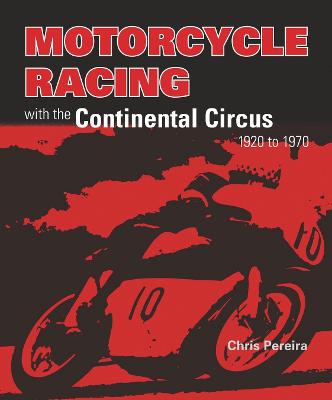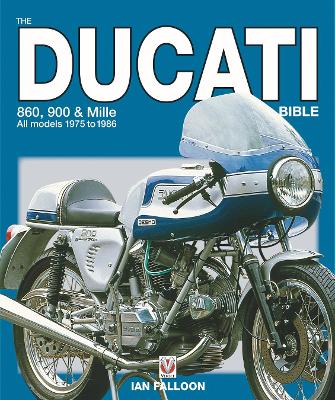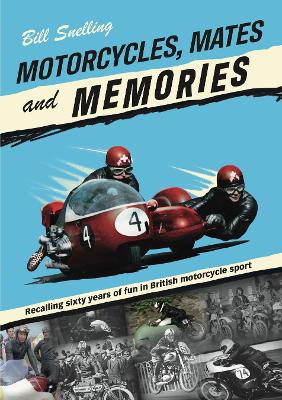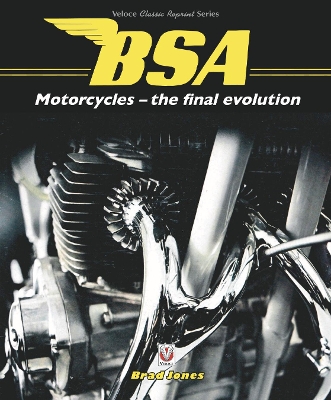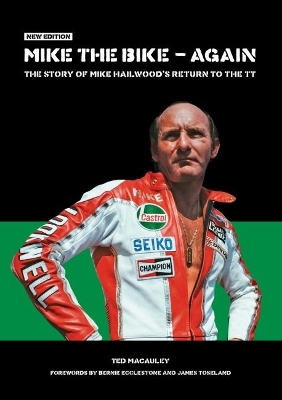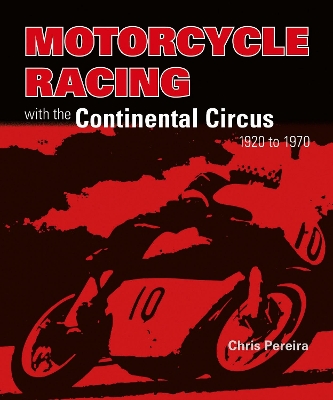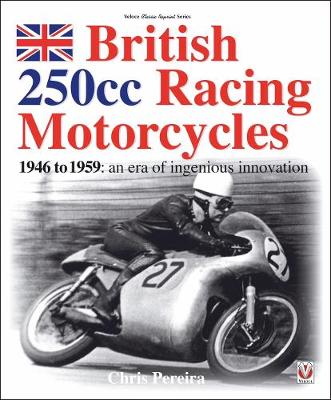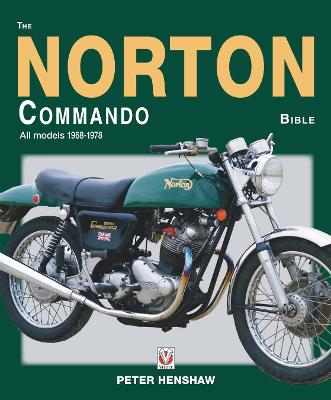Slow Burn - The growth Superbikes & Superbike racing 1970 to 1988
 -15%
portes grátis
-15%
portes grátis
Slow Burn - The growth Superbikes & Superbike racing 1970 to 1988
Guntrip, Bob
David & Charles
05/2019
256
Dura
Inglês
9781787113169
15 a 20 dias
Descrição não disponível.
Introduction: this isn't the future but you can see it from here
1 Rising son
As the 1970s dawned, the four-stroke seemed likely to disappear from international open-class racing altogether; but not before a final flourish - in a new class - led by Britain's last ailing giants
2 Green on blue
Brazen, brash, irritating to the ear and very fast, the first big-bore two-strokes began to appear in 1972 and Paul Smart was right there when it mattered
3 Tomorrow, the world
Yamaha's trim, purposeful motorcycles have formed the backbone of racing for half a century; but there was never a time that emphasised their potential quite like the mid-1970s
4 Kenny
Back in the Florida sunshine for Daytona '76, Yamaha unveiled four new projectiles that got everyone talking and helped to define Kenny Roberts' career. And then there were those BMWs
5 Pushing on an open door
Finally, F750 had its world championship for 1977 - but it came too late to be much more than a one-make, one-model competition. Little wonder the alternatives were gaining ground
6 Warriors for the working day
If Honda's CB750 wasn't immediately the stuff racing careers were built on, Kawasaki's Z1 and the Suzuki GS1000 were a different proposition - and just the thing for harassing two-strokes
7 Long-distance confirmation
While Yamaha did as it pleased in the dying years of F750, other marques began to see possibilities in the European zest for endurance racing, Honda prominent among them
8 Formula one
Problem: the TT is stripped of its world championship status after 1976. Solution: the TT stages its own world championship, and offers one path to cheaper racing
9 Welcome to the jungle
At Ontario in 1973, it was called Superbike Production. Soon it would become AMA Superbike and routinely offer some of the world's tightest racing - just ask Eddie, Freddie and Wes
10 All change
Another decade, another recession: 1000cc motorcycles are too powerful and too thirsty, so Wayne Rainey and Joey Dunlop showed how to make the right impression with a 750
11 Honda enters, Honda...
The progress of the world's biggest bike maker through the 1980s paralleled the evolution of Superbike racing itself: uncertain beginnings, growing strength - and a very grand finale
12 All together now
As TT-F1 grew stronger, the Superbike World Championship assumed shape and substance; and there could only be one winner
1 Rising son
As the 1970s dawned, the four-stroke seemed likely to disappear from international open-class racing altogether; but not before a final flourish - in a new class - led by Britain's last ailing giants
2 Green on blue
Brazen, brash, irritating to the ear and very fast, the first big-bore two-strokes began to appear in 1972 and Paul Smart was right there when it mattered
3 Tomorrow, the world
Yamaha's trim, purposeful motorcycles have formed the backbone of racing for half a century; but there was never a time that emphasised their potential quite like the mid-1970s
4 Kenny
Back in the Florida sunshine for Daytona '76, Yamaha unveiled four new projectiles that got everyone talking and helped to define Kenny Roberts' career. And then there were those BMWs
5 Pushing on an open door
Finally, F750 had its world championship for 1977 - but it came too late to be much more than a one-make, one-model competition. Little wonder the alternatives were gaining ground
6 Warriors for the working day
If Honda's CB750 wasn't immediately the stuff racing careers were built on, Kawasaki's Z1 and the Suzuki GS1000 were a different proposition - and just the thing for harassing two-strokes
7 Long-distance confirmation
While Yamaha did as it pleased in the dying years of F750, other marques began to see possibilities in the European zest for endurance racing, Honda prominent among them
8 Formula one
Problem: the TT is stripped of its world championship status after 1976. Solution: the TT stages its own world championship, and offers one path to cheaper racing
9 Welcome to the jungle
At Ontario in 1973, it was called Superbike Production. Soon it would become AMA Superbike and routinely offer some of the world's tightest racing - just ask Eddie, Freddie and Wes
10 All change
Another decade, another recession: 1000cc motorcycles are too powerful and too thirsty, so Wayne Rainey and Joey Dunlop showed how to make the right impression with a 750
11 Honda enters, Honda...
The progress of the world's biggest bike maker through the 1980s paralleled the evolution of Superbike racing itself: uncertain beginnings, growing strength - and a very grand finale
12 All together now
As TT-F1 grew stronger, the Superbike World Championship assumed shape and substance; and there could only be one winner
Este título pertence ao(s) assunto(s) indicados(s). Para ver outros títulos clique no assunto desejado.
Production Bike; Production racing; Superbike; motorbike; motorbike racing; Superbike book; Superbike Racing Book; Ducati EVD; Ducati 848; Honda RVF; Bimota; Harley-Davidson; TZ750; H2; Buell; Wes Cooley; Yoshimura; Honda RC30; Graeme Crosby; Joey Dunlop; Wayne Rainey; Eddie Lawson; Freddie Spencer; Barry Sheene; Kevin Schwantz; Mike Hailwood; Marco Luccinelli; Mick Doohan; Yvon Duhamel; European racing; Suzuka; Eight Hours; TT Formula 1; Daytona 200; Kenny Roberts; Transatlantic Trophy; Isle of Man TT; Bol d'Or; motorcycle grand prix; motorcycle racing; Superbike World Championship; Brands Hatch; Mallory Park; Macau; superbike riders; superbike races; Ontario; 1970s; superbikes; Suzuki GSX-R750; Kawasaki KR750; Kawasaki Z1; Match Races; Paul Smart; Ray Pickrell; Tony Jefferies; BSA Rocket; Ducati Pantah; Honda CB750; Suzuki RG500; Norton Commando; Yamaha FZ750; classic bikes; vintage bikes; Racing Line; Bob Guntrip; Veloce; 978-1-787113-16-9; 9781787113169; V5316
Introduction: this isn't the future but you can see it from here
1 Rising son
As the 1970s dawned, the four-stroke seemed likely to disappear from international open-class racing altogether; but not before a final flourish - in a new class - led by Britain's last ailing giants
2 Green on blue
Brazen, brash, irritating to the ear and very fast, the first big-bore two-strokes began to appear in 1972 and Paul Smart was right there when it mattered
3 Tomorrow, the world
Yamaha's trim, purposeful motorcycles have formed the backbone of racing for half a century; but there was never a time that emphasised their potential quite like the mid-1970s
4 Kenny
Back in the Florida sunshine for Daytona '76, Yamaha unveiled four new projectiles that got everyone talking and helped to define Kenny Roberts' career. And then there were those BMWs
5 Pushing on an open door
Finally, F750 had its world championship for 1977 - but it came too late to be much more than a one-make, one-model competition. Little wonder the alternatives were gaining ground
6 Warriors for the working day
If Honda's CB750 wasn't immediately the stuff racing careers were built on, Kawasaki's Z1 and the Suzuki GS1000 were a different proposition - and just the thing for harassing two-strokes
7 Long-distance confirmation
While Yamaha did as it pleased in the dying years of F750, other marques began to see possibilities in the European zest for endurance racing, Honda prominent among them
8 Formula one
Problem: the TT is stripped of its world championship status after 1976. Solution: the TT stages its own world championship, and offers one path to cheaper racing
9 Welcome to the jungle
At Ontario in 1973, it was called Superbike Production. Soon it would become AMA Superbike and routinely offer some of the world's tightest racing - just ask Eddie, Freddie and Wes
10 All change
Another decade, another recession: 1000cc motorcycles are too powerful and too thirsty, so Wayne Rainey and Joey Dunlop showed how to make the right impression with a 750
11 Honda enters, Honda...
The progress of the world's biggest bike maker through the 1980s paralleled the evolution of Superbike racing itself: uncertain beginnings, growing strength - and a very grand finale
12 All together now
As TT-F1 grew stronger, the Superbike World Championship assumed shape and substance; and there could only be one winner
1 Rising son
As the 1970s dawned, the four-stroke seemed likely to disappear from international open-class racing altogether; but not before a final flourish - in a new class - led by Britain's last ailing giants
2 Green on blue
Brazen, brash, irritating to the ear and very fast, the first big-bore two-strokes began to appear in 1972 and Paul Smart was right there when it mattered
3 Tomorrow, the world
Yamaha's trim, purposeful motorcycles have formed the backbone of racing for half a century; but there was never a time that emphasised their potential quite like the mid-1970s
4 Kenny
Back in the Florida sunshine for Daytona '76, Yamaha unveiled four new projectiles that got everyone talking and helped to define Kenny Roberts' career. And then there were those BMWs
5 Pushing on an open door
Finally, F750 had its world championship for 1977 - but it came too late to be much more than a one-make, one-model competition. Little wonder the alternatives were gaining ground
6 Warriors for the working day
If Honda's CB750 wasn't immediately the stuff racing careers were built on, Kawasaki's Z1 and the Suzuki GS1000 were a different proposition - and just the thing for harassing two-strokes
7 Long-distance confirmation
While Yamaha did as it pleased in the dying years of F750, other marques began to see possibilities in the European zest for endurance racing, Honda prominent among them
8 Formula one
Problem: the TT is stripped of its world championship status after 1976. Solution: the TT stages its own world championship, and offers one path to cheaper racing
9 Welcome to the jungle
At Ontario in 1973, it was called Superbike Production. Soon it would become AMA Superbike and routinely offer some of the world's tightest racing - just ask Eddie, Freddie and Wes
10 All change
Another decade, another recession: 1000cc motorcycles are too powerful and too thirsty, so Wayne Rainey and Joey Dunlop showed how to make the right impression with a 750
11 Honda enters, Honda...
The progress of the world's biggest bike maker through the 1980s paralleled the evolution of Superbike racing itself: uncertain beginnings, growing strength - and a very grand finale
12 All together now
As TT-F1 grew stronger, the Superbike World Championship assumed shape and substance; and there could only be one winner
Este título pertence ao(s) assunto(s) indicados(s). Para ver outros títulos clique no assunto desejado.
Production Bike; Production racing; Superbike; motorbike; motorbike racing; Superbike book; Superbike Racing Book; Ducati EVD; Ducati 848; Honda RVF; Bimota; Harley-Davidson; TZ750; H2; Buell; Wes Cooley; Yoshimura; Honda RC30; Graeme Crosby; Joey Dunlop; Wayne Rainey; Eddie Lawson; Freddie Spencer; Barry Sheene; Kevin Schwantz; Mike Hailwood; Marco Luccinelli; Mick Doohan; Yvon Duhamel; European racing; Suzuka; Eight Hours; TT Formula 1; Daytona 200; Kenny Roberts; Transatlantic Trophy; Isle of Man TT; Bol d'Or; motorcycle grand prix; motorcycle racing; Superbike World Championship; Brands Hatch; Mallory Park; Macau; superbike riders; superbike races; Ontario; 1970s; superbikes; Suzuki GSX-R750; Kawasaki KR750; Kawasaki Z1; Match Races; Paul Smart; Ray Pickrell; Tony Jefferies; BSA Rocket; Ducati Pantah; Honda CB750; Suzuki RG500; Norton Commando; Yamaha FZ750; classic bikes; vintage bikes; Racing Line; Bob Guntrip; Veloce; 978-1-787113-16-9; 9781787113169; V5316



